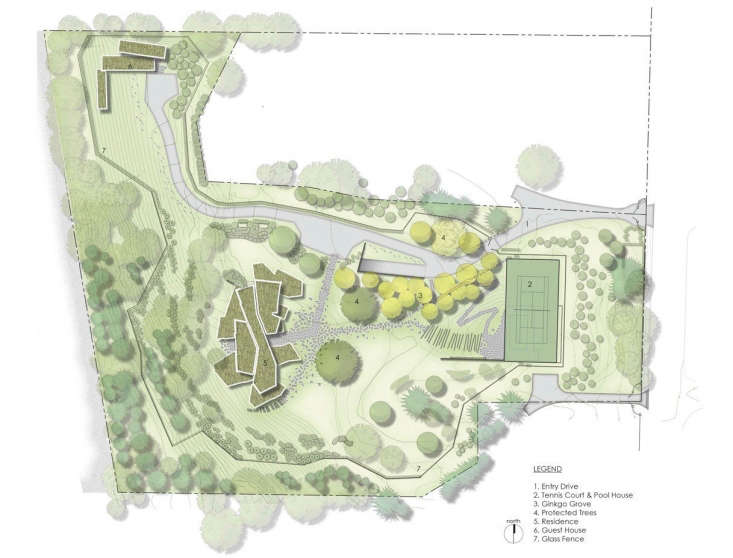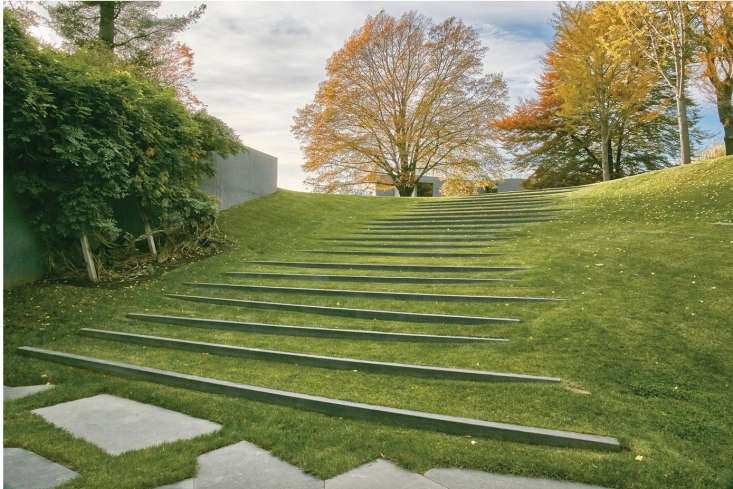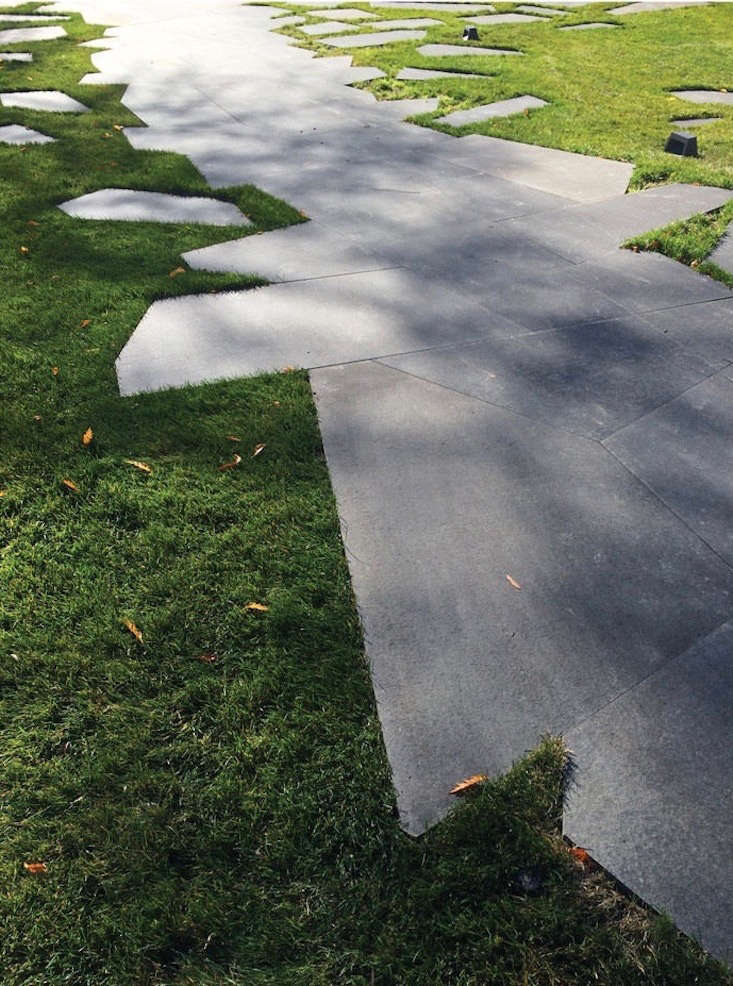Not everyone in the arty, affluent village of Hastings-on-Hudson, New York was thrilled to hear the news when billionaire financier David E. Shaw bought three properties, demolished the houses on them, and built as a replacement a 38,000-square-foot, $75-million estate for his family.
“Deeply saddened,” one long-time resident told the New York Times in 2014 after construction got underway. “Out of character with what Hastings is all about,” said another.
Three years later, the neighbors may still be puzzling over the “wrinkled” concrete house that architect Steven Holl designed to sit on the top of a bluff overlooking the Hudson River. But we hope they agree that the 4.5-acre property’s new garden is spectacular. Created by landscape architect Edmund Hollander to showcase magnificent specimen trees and sweeping cliffside views, it won an Honor prize in this year’s American Society of Landscape Architects Awards contest. Let’s take a closer look:
Photography by Charles Mayer courtesy of ASLA.

“The angled concrete residence sits atop the precipice of a bluff, maximizing views to frame fissured rock faces in the distance,” notes Hollander, adding that stately trees on the property “were carefully protected throughout construction in a strategic effort to preserve the spirit of place and anchor a sense of human scale surrounding the home.”

Site Plan


The landscape society jury said:, ” Consider how the stone in the path is cut to abstract the falling gingko leaves, giving an Asian feel.”







N.B.: See more American Society of Landscape Architects winners:
- A Landscape Restored: Big Skies and Wildlife Habitats in Aspen.
- Landscape Architect Visit: Scott Lewis Turns A Small SF Backyard Into an Urban Oasis.
- Landscape Architect Visit: Blasen Landscape Architects in San Francisco.












Have a Question or Comment About This Post?
Join the conversation (1)